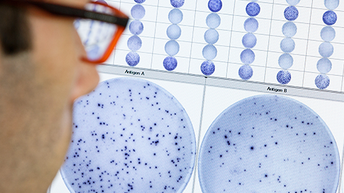
Welcome to Revvity's T-SPOT Technology page, showcasing our platform designed around the ELISPOT (Enzyme-Linked ImmunoSpot) method. Our T-SPOT portfolio, which came to us as part of the Oxford Immunotec acquisition, harnesses the power of T cells which are crucial components of the adaptive immune system, to provide highly sensitive and specific measurements of cell-mediated immune responses.
This technology plays a vital role in various clinical applications, aiding in the detection of infections and supporting the monitoring of immune responses. Explore our featured products and resources below to discover how T-SPOT technology can enhance your clinical testing capabilities and contribute to improved patient care.
Role of T cells
T cells are crucial components of the adaptive immune system, playing a central role in orchestrating almost all adaptive immune responses by:1, 2
- Eliminating infected or cancerous cells
- Mobilizing immune cells to mount robust immune responses
- Developing a pathogen memory to prevent reinfection
- Stimulating B cells to generate antibody responses
By utilizing the T-SPOT technology, which is based on the ELISPOT (enzyme-linked immunospot) assay, we can accurately identify and analyze T cell responses to specific pathogens, aiding in the detection and monitoring of various infectious diseases.
Explore our solutions
Unlock the ELISPOT potential with the T-SPOT technology
Revvity have over 20 years of experience in T cell immunology and accurately measuring T cell responses using our T-SPOT technology. By leveraging the ELISPOT methodology to perform an interferon-gamma release assay (IGRA), it offers a refined analysis of individual immune responses to specific antigens.
The technology includes 3 crucial steps:
- Cell isolation: Extract the desired cell population (PBMCs) from whole blood
- Cell washing: Enables removal of potential interfering substances from whole blood
- Cell counting: Ensures the required number of cells are used to produce reportable and accurate results regardless of individual patient cell counts
Through this innovative technology, we demonstrate our commitment to pushing the boundaries of healthcare and harnessing the power of the immune system to enhance diagnostic accuracy and improve patient outcomes.
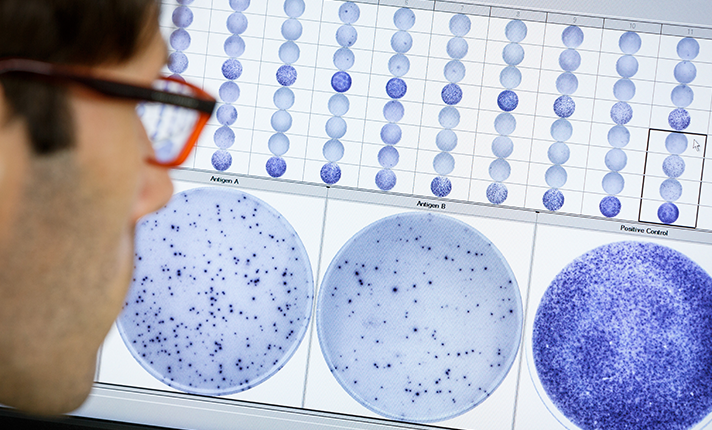
The T-SPOT test principle (ELISPOT methodology)

Step 1
A blood specimen is collected using routine phlebotomy and a standard blood collection tube from which a subset of white blood cells, known as peripheral blood mononuclear cells (PBMCs), are isolated. The cells are washed, counted and normalized to create a standard cell suspension.
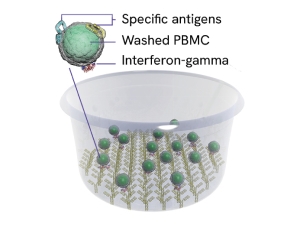
Step 2
A standard number of cells are added into specially designed plates and stimulated with specific antigens. Cells responding to these antigens release interferon-gamma.
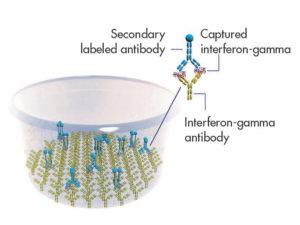
Step 3
Interferon-gamma antibodies are used to directly capture interferon-gamma as it is released by the cells. A secondary enzyme labeled antibody is added and binds to the captured interferon-gamma.
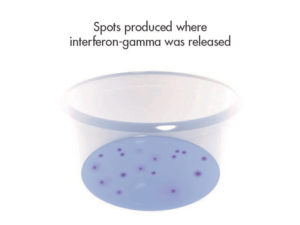
Step 4
A detection reagent is added and reacts with the enzyme labeled antibody. This reaction produces spots, which are a footprint of where the interferon-gamma was released. Spots are then enumerated.
Featured products
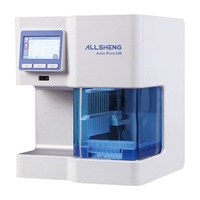
Products may not be licensed in accordance with the laws in all countries. Please check with your local representative for availability. Revvity, Inc. does not endorse or make recommendations with respect to research, medication, or treatments. All information presented is for informational purposes only and is not intended as medical advice.
References:
- National Institute of Allergy and Infectious Diseases. Overview of the Immune System.
- Abbas AK, et al. Cellular and Molecular Immunology. 9th edition. Elsevier; 2017.

How can we help you?
We are here to answer your questions.































